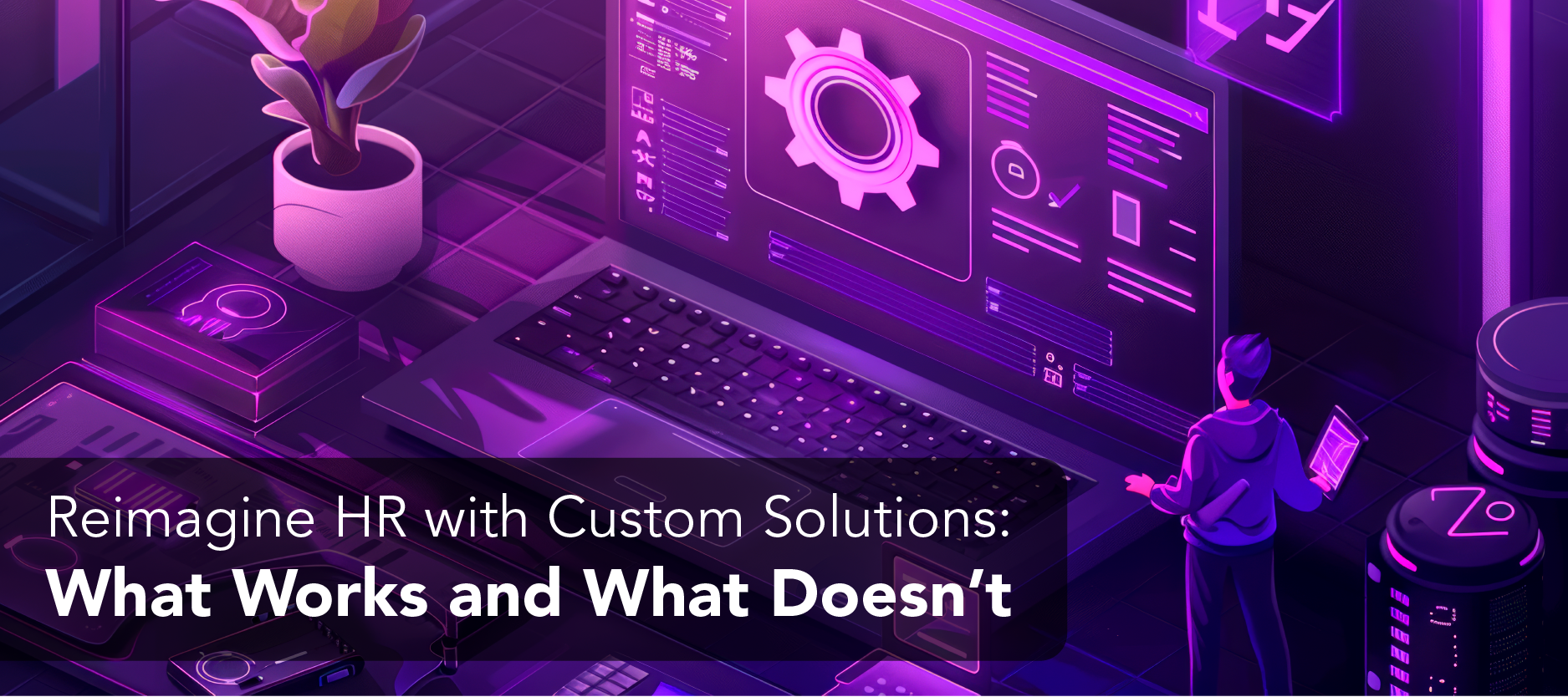
Automating HR tasks through advanced Human Capital Management (HCM) solutions has become essential for companies aiming to optimize productivity and reduce operational costs. Studies show that automating HR functions can cut labor-intensive activities by as much as 50%, allowing HR teams to focus on strategic initiatives rather than manual tasks. For instance, a recent case study revealed that one global financial firm reduced its HR-related expenses by 40% after implementing a consolidated HCM platform.
But despite these clear benefits, not every HR process needs—or benefits from—the same level of customization. Understanding which areas are best suited for tailored solutions, and which perform better with standardization, can help HR teams achieve the perfect balance of efficiency and effectiveness.
The Value of Customization in HCM Solutions
Customization in HCM allows organizations to design HR processes that align closely with their unique culture, operational needs, and industry standards. Customization enables:
Better alignment with business goals, increasing overall effectiveness.
Improved employee engagement, as processes are tailored to meet the specific needs of each team.
Streamlined HR workflows, allowing for more meaningful HR involvement in strategic planning.
But it’s essential to know where customization truly adds value. Here are the areas where customization can make the biggest impact.
What Works: Areas Ideal for Customization in HCM Solutions
1. Onboarding and Training Programs
In a study by Glassdoor, organizations with a strong onboarding process improve new hire retention by 82% and productivity by over 70%. Customizing onboarding and training programs to suit your organization’s unique needs can deliver even greater results.
Why Customize? Every organization has unique onboarding requirements, influenced by its culture, industry standards, and employee roles. Tailored onboarding and training programs allow new employees to acclimate more effectively, building engagement from day one.
Example: In the retail industry, onboarding is critical, as employees need to understand specific product lines, customer service protocols, and store policies. Custom onboarding tools with AI capabilities can personalize learning modules and provide interactive training that aligns directly with the employee’s role and location.
2. Performance Management & Goal Setting
Performance management is often cited as one of the most valuable HR processes, yet many employees feel it’s misaligned with their roles. A customized approach can address these gaps.
Why Customize? Customizing performance evaluations and goal setting allows companies to create KPIs tailored to their operational and departmental objectives, which can yield more actionable insights.
Example: In large enterprises, performance metrics can be customized to track productivity, skills development, and safety compliance. This ensures that each evaluation aligns with the company’s objectives and improves clarity and accountability for both employees and managers.
3. Workforce Scheduling & Attendance Management
Industries with irregular working hours, like healthcare and manufacturing, benefit immensely from customized scheduling tools. According to a survey by the Workforce Institute, 53% of employees cite scheduling flexibility as essential for job satisfaction.
Why Customize? Customized scheduling tools allow organizations to manage variable shift requirements, reduce scheduling conflicts, and ensure workforce availability aligns with demand.
Example: In manufacturing, HCM solutions with custom scheduling can provide visibility into shift availability, prevent worker fatigue, and help meet production demands efficiently.
What Doesn’t Work: Areas Best Kept Standardized
1. Core Payroll Processing
Payroll accuracy is critical, not only for maintaining employee satisfaction but also for ensuring regulatory compliance. Research shows that payroll errors can cost companies significant time and resources in corrections and compliance penalties.
Why Standardize? Standardized payroll processes are essential for ensuring accuracy, consistency, and compliance with tax and labor laws. Customizing payroll unnecessarily can lead to compliance issues and increase processing times.
Example: Standardized payroll modules within HCM platforms help organizations maintain accuracy, prevent errors, and adhere to local and national compliance requirements.
2. Leave and Absence Policies
With absenteeism costing companies as much as $225.8 billion annually in the U.S. alone, managing leave policies effectively is essential. However, customizing these policies too much can create tracking discrepancies.
Why Standardize? A standardized leave management system ensures fairness and clear policies that are easy to track, reducing administrative complexity.
Example: HCM platforms often come with robust, standardized leave tracking capabilities, ensuring uniformity across departments and locations while aligning with company policies and labor laws.
3. Employee Data and Document Management
Handling employee data securely is a non-negotiable part of HR operations. Studies show that data breaches cost companies an average of $3.86 million per incident, making secure data management crucial.
Why Standardize? Sensitive information needs standardized handling to ensure data integrity, security, and compliance with data protection laws.
Example: Centralized data and document management capabilities in HCM solutions provide secure access and make it easy to manage records, reducing the risk of data breaches and ensuring compliance with privacy regulations.
Striking the Right Balance
Balancing customization and standardization in your HCM system can significantly impact HR’s effectiveness and efficiency. By identifying which processes require personalization and which benefit from uniformity, HR leaders can create a streamlined, compliant, and impactful system.
For instance, while tailored onboarding can improve engagement and retention, standardized payroll ensures consistency and compliance. This “One Size Fits One” approach allows organizations to maximize their HCM investments without compromising on quality or functionality.
Benefits of Balancing Custom and Standard Solutions
A balanced approach in HCM delivers the following benefits:
Increased Efficiency: Customizing high-impact areas, like onboarding and performance management, improves engagement and retention, while standardizing transactional tasks, like payroll, saves time.
Compliance Assurance: Standardization in areas like payroll and data handling ensures that the company remains compliant with labor laws and data privacy regulations.
Scalability: An HCM solution that combines custom and standard elements is easier to scale and adapt as the organization grows or evolves.
HONO’s HCM solutions with Gen AI provide the best of both worlds: the flexibility to tailor high-impact HR processes to meet specific organizational needs and the structure to maintain efficiency and compliance in core functions. By reimagining HR through customized and standardized processes, HONO helps businesses achieve operational efficiency, employee satisfaction, and long-term value.
Ready to explore the best HCM solution for your organization? Let HONO guide you through a balanced, customized approach that works for your unique business needs.
.png?width=50&height=50&name=Team%20HONO%20logo-01%20(1).png)



